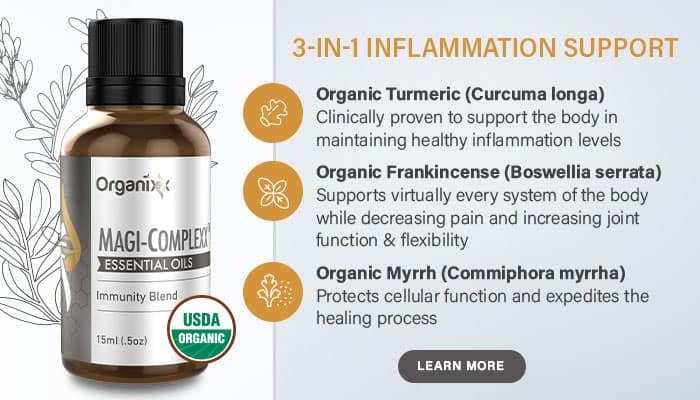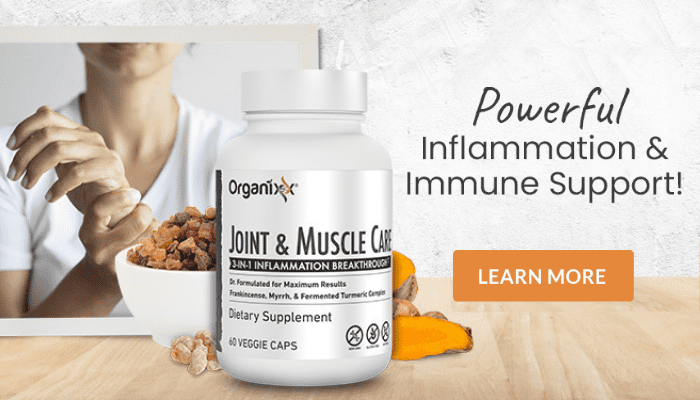Picture this… you’ve just spent several weeks sailing southward on the open seas from England when you finally spot new land somewhere in the South Pacific. As you set down amidst striking white cliffs surrounded by emerald blue waters, you’re greeted by friendly locals who take you along the coastline to see the area’s many breathtaking sights.
During this trek you spot something particularly interesting: tall, wispy trees with sticky, aromatic leaves that you’re told possess miraculous healing qualities.
Intrigued by this, you decide to boil these leaves into a tea for you and your worn-out crew to see if there’s any merit to the hype. Lo and behold, just a few minutes later you feel cleansed, soothed, and rejuvenated. You decide to honor this tree from which these amazing leaves were plucked by suitably naming it a “tea tree.” The rest, as they say, is history and the start of the world’s love affair with the “tea tree” and its tea tree oil benefits.
This curious little story might sound like some kind of fantasy fiction, but it reportedly happened back in 1770. The main character was Captain James Cook of circumnavigation fame.
Captain Cook is the man who, besides the aborigines in Australia where he landed, is said to be the first to discover the allure of the tea tree. He’s also said to have named the tree as such, although its official scientific name is Melaleuca alternifolia. And since the time of Captain Cook, the oil of tea tree (melaleuca oil) has lived on as one of the world’s most prized botanical therapeutics, for the reasons you’re about to discover.
Tea Tree Oil Benefits: From Antiquity to Modernity
 Though the history books credit Captain Cook as being the tea tree pioneer, the healing potential of this amazing plant was actually known long before he ever even arrived “down under.”
Though the history books credit Captain Cook as being the tea tree pioneer, the healing potential of this amazing plant was actually known long before he ever even arrived “down under.”
Some of the earliest historical accounts of indigenous Australian people groups suggest that tea tree leaves were commonly use in poultices to treat wounds and prevent infections. This tradition was carried forward as science uncovered tea tree oil’s incredible antiseptic, antibacterial, antifungal, anti-inflammatory, and antiviral properties [1].
The earliest official recognition of tea tree oil as a botanical medicine occurred in the 1920s when it was described in the scientific literature as being a powerful germicide when used topically. Its popularity quickly soared, and the oil spread throughout Europe over the following decade. Eventually tea tree oil received its own monograph that was published by the World Health Organization (WHO), the British Pharmacopoeia, The Pharmaceutical Society of Great Britain, and the European Society for Cognitive Psychology (ESCOP).
An early 20th century study published in the British Medical Journal cites tea tree oil as “a powerful disinfectant [that] is non-poisonous and gentle” to the body. During World War II, Australian soldiers used tea tree oil as a go-to antiseptic remedy in their first aid kits.
More recently in 2007, the Australian Tea Tree Industry Association (ATTIA), an agency of the Australian government, published a comprehensive dossier outlining a plethora of more recent science backing tea tree oil’s many therapeutic uses.
Listed in this dossier are the impressive results of numerous human clinical trials showing tea tree oil benefits. Melaleuca (tea tree) may provide support to the body in the following ways [2]:
- Fighting harmful bacteria, including “superbugs” like methicillin-resistant Staphylococcus aureus (MRSA)
- Targeting viruses, including persistent viral infections like herpes labialis (cold sores and fever blisters)
- Treating yeast and fungal infections like tinea pedis (ringworm), tinea unguium (a fungal infections of the nails), and candidiasis (candida)
- Fighting acne vulgaris, a common skin condition
- Eliminating dandruff
- Preventing head lice
- Clearing gingivitis, denture stomatitis, and other forms of oral infection
Furthermore, the results of a study recently issued by Australia’s Rural Industries Research and Development Corporation (RIRDC) suggest that tea tree oil may even be an effective remedy for more serious conditions like skin cancer.
In conjunction with the University of Western Australia (UWA), Australian government researchers examined the topical use of tea tree oil in mouse models and found that it may, in fact, be a potent anti-tumor agent.
“We’ve known for a long time that tea tree oil has recognized health benefits, particularly its role in combating bacteria, fungi, and viruses,” stated Dr. Sara Greay from UWA about these groundbreaking results. Dr. Greay and her team found that just four days of topical treatment with tea tree oil was enough to promote significant tumour growth inhibition in cancerous mice.
Although we and others have reported anti-cancer activity of tea tree oil against cells in vitro, no study has ever reported anti-tumour efficacy of tea tree oil in a preclinical cancer setting…so what this new research tells us is that tea tree oil, in the right formulation, may also play a role as a clinically effective topical treatment for skin cancer in humans [3].”
How People Are Using Tea Tree Oil Today
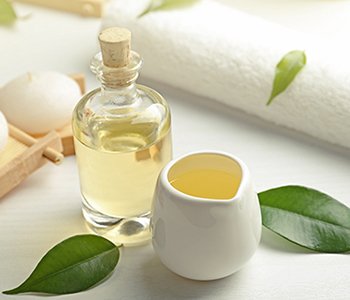 All of this scientific research into tea tree oil’s many potential benefits for humans is both impressive and ongoing. Its use is widespread and ever-growing as a result, with tea tree oil now being incorporated into an expanding array of consumer products.
All of this scientific research into tea tree oil’s many potential benefits for humans is both impressive and ongoing. Its use is widespread and ever-growing as a result, with tea tree oil now being incorporated into an expanding array of consumer products.
These include moisturizers, body lotions, shampoos and conditioners, toothpastes, hand washes, face-cleansing washes, soaps, foot sprays, foot powders, shaving products, post-waxing treatments, and deodorants.
Pure tea tree oil is also a popular choice for many people who choose to make their own care and cleaning products at home without harsh chemicals.
For simple at-home applications, pure tea tree oil can be applied to bandages and gauze strips, for instance, to support rapid wound healing without infection. Some people mix it with carrier oils like coconut, jojoba, olive, and argan and apply it directly to itchy or inflamed skin as well, since studies show that it helps to minimize histamine reactions [4].
For people with acne, tea tree oil is often a preferable alternative to benzoyl peroxide because it’s been known to work similarly without causing harmful side effects [5].
In hospitals, tea tree oil is commonly used to sanitize surfaces that may be lurking with MRSA or other dangerous “superbugs” like “golden staph” that could harm patients.
A clinical trial that took place at Westmead Hospital in Sydney, Australia, even found that a simple tea tree oil body wash was highly effective at eradicating golden staph from patients’ bodies, prompting the study’s lead author to declare it a “suitable” natural treatment for superbugs [6].
Watch this video to discover the top 10 health benefits of tea tree oil, and find out the startling and little-known facts about how essential oils really ARE essential for your health.
Tea Tree for Respiratory Support
Another tea tree oil benefit is that it can be diffused as aromatherapy to help support the immune and respiratory systems. Using it this way, as well as topically, may support or even replace the use of conventional antibiotics to address infections.
Evidence of this is presented in a 2004 study published in the Journal of Hospital Infection, demonstrating how tea tree oil has the potential to help mitigate the growing problem of antibiotic resistance that’s sweeping the globe [7].
Similarly, tea tree oil can help purify the air you breathe inside your home or workplace. Scientific evidence suggests that diffusing tea tree oil can help kill molds and other types of harmful pathogens that might be lurking in furniture or on other surfaces. Tea tree oil can also be mixed with laundry detergents, dishwasher soaps, and other home cleaning products for an added antimicrobial boost that doesn’t kill off all the healthy bacteria your body needs.
Perhaps the only way you don’t want to use tea tree oil is orally, despite Captain Cook’s brewing of it as a tea. The only exceptions are things like toothpastes, mouthwashes, and flavored toothpicks, none of which involve swallowing significant amounts of it. Ingesting too much tea tree oil has been reported to cause adverse effects such a digestive discomfort, dizziness, and hives.
When using any essential oils, it is always best to consult with a knowledgeable healthcare practitioner who can advise on the appropriate uses for your particular health concerns.
The powerhouse trio of herbs in Magi-Complexx Essential Oil provides the strongest, most synergistic healing effect, helping sufferers of arthritis pain, constant muscle aches and pains, neuropathy, systemic inflammation, slowed wound healing, circulatory challenges, as well as skin irritations like eczema, psoriasis, and acne.
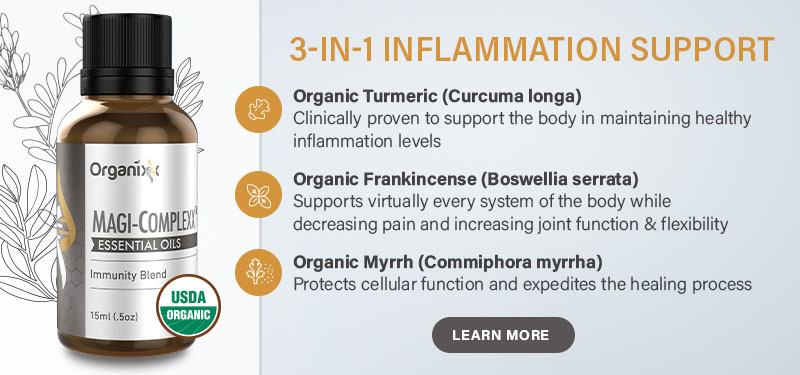
If you’ve ever had the pleasure of smelling one up close, then you’re already familiar with one of the many special traits that characterize the eucalyptus tree.
Slightly sweet with a hint of mint and notes of pine, the amazing aroma of this Australia-native gum tree species is nothing short of unique. It’s long tickled the senses of both people and animals alike, with perhaps the most noteworthy savorers being koala bears that prefer eucalyptus leaves as a primary source of nourishment.
But there are many other things that make eucalyptus − also known as Tasmanian Blue Gum − desirable. Not the least of which are the many and diverse benefits of eucalyptus oil.
Extracted predominantly from the tree’s leaves, eucalyptus oil has been a prized Aboriginal folk medicine for many centuries. It has a well-established profile of therapeutic uses that include cleansing wounds, detoxifying the body, and supporting respiratory health, among other benefits.
Because of its rich historical significance in natural medicine, eucalyptus has piqued the interest of many a scientist today who are actively studying what it has to offer in the realm of modern health care.
Evidence based results thus far are intriguing to say the least. The research suggests that eucalyptus essential oil just might be one of the best kept secrets that’s missing from your medicine cabinet.
A Full-Spectrum Eucalyptus Oil Will Contain These 2 Key Constituents
Perhaps the most significant constituent in full-spectrum, therapeutic-grade eucalyptus oil is eucalyptol, also known as 1,8-cineole. It’s by far the most well-studied of the chemical compounds found in eucalyptus, and for good reason: its therapeutic properties are both vast and impressive.
Eucalyptol has been shown in the scientific literature to possess a full spectrum of bioactivity, demonstrating multiple beneficial properties including being:
- antimicrobial [1]
- analgesic [2,3]
- anti-inflammatory [4-6]
- antibacterial [7,8]
- antioxidant [9]
- antispasmodic [10-12]
- antiviral [13]
- hypotensive [14,15]
- mucolytic [16,17]
Small amounts of eucalyptol are commonly added to oral hygiene products like mouthwash to combat bad breath, as well as to cough suppressants such as cough drops, because of its freshening, minty flavor.
Eucalyptol also has the added benefit of targeting harmful microorganisms. This is why many people use products containing eucalyptol – including eucalyptus essential oil, of course – to fight things like colds and flu, coughs, sinus infections, and respiratory tract infections.

Another key constituent in the more common varieties of eucalyptus is piperitone, a monoterpenoid ketone that’s been shown to help break up mucus and improve airflow in the respiratory tract.
Possessing a strong pepperminty aroma, piperitone is reported to help clear up sinus congestion, with pronounced benefits against conditions like asthma and bronchitis [18].
There are many other constituents found in eucalyptus that support its therapeutic synergy, though they tend to be in much smaller quantities.
Did You Know There Are Different Varieties of Eucalyptus?
There are many different varieties of eucalyptus with their own unique constituent profiles, including Eucalyptus globulus, one of the most popular varieties that contains between 60%-75% eucalyptol. Other noteworthy eucalyptus varieties include [19]:
- Eucalyptus radiata, also known as Black Peppermint Oil. Native to Australia. E. radiata has a similar profile as E. globulus, containing 60%-75% eucalyptol and a noteworthy concentration of piperitone – though it has a milder aroma than E. globulus demarcated with sweeter, fruiter notes.
- Eucalyptus citriodora, also known as Lemon Eucalyptus Oil. Native to Australia. E. citriodora contains 40%-80% citronellal, a monoterpenoid with antimicrobial, antifungal, antispasmodic, and anticonvulsant properties [20].
- Eucalyptus dives, also known as Peppermint Eucalyptus Oil. E. dives contains 35%-50% piperitone and 23%-30% phellandrene, a compound known to help ward off insects.
- Eucalyptus bicostata, also known as Eucalyptus Blue. Native to Ecuador and Australia. E. bicostata contains high levels of alpha-pinene, an aromatic terpene also found in Cannabis sativa that boasts a broad spectrum of potential uses, including as a bronchodilator, an anti-inflammatory, and for anti-cancer support [21].
- Eucalyptus polybractea, also known as Blue Mallee Oil. Native to Australia. E. polybractea contains upwards of 85%-95% eucalyptol, with a strong aroma resembling cumin.
- Eucalyptus staigeriana, also known as Lemon Ironbark. E. staigeriana contains roughly 51% aldehydes, a class of aromatic compounds with strong anti-inflammatory and antiviral properties. Aldehydes are also known to have a sedative effect [22].
Eucalyptus Radiata: A Top Choice for Full-Spectrum Support
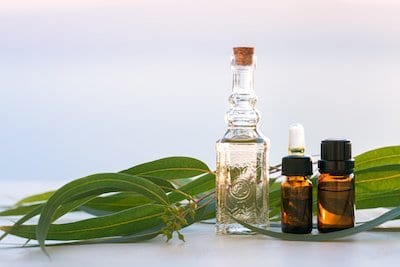 When it comes to choosing a eucalyptus essential oil, you can clearly see that there are many unique facets to each one that are worth your time to carefully consider.
When it comes to choosing a eucalyptus essential oil, you can clearly see that there are many unique facets to each one that are worth your time to carefully consider.
What you want your oil to do for you, and how you want it to smell, will be among the major determining factors.
You’ll also need to decide between oil varieties that contain very high levels of mostly one type of compound, and those that contain a more harmonious balance of a lot of different types of compounds.
If full-spectrum activity is what you’re looking for (which many people are), E. radiata is likely your eucalyptus essential oil of choice. One reason many people prefer E. radiata is that the smell is not quite as intense as E. globulus, though it has a similar desirable constituent profile. E. radiata is also sweeter and fruitier smelling, lending to a more stimulating and rejuvenating experience.
As it turns out, the first commercial preparations of eucalyptus oil are also said to have been from E. radiata, this particular strain being the one that pharmacist Joseph Bosisto first developed for patient use back in 1852 [23].
It is from this special variety that eucalyptus oil became a “thing,” so to speak, paving the way for much of the scientific research that has since taken place with regards to this powerful botanical tincture.
4 Favorite Eucalyptus Oil Benefits & Uses
So, how does one go about using eucalyptus oil? Generally speaking, you don’t want to consume it – the exception, of course, being the small amounts of eucalyptol that are found in certain foods, medicines, and oral care products.
While there are, indeed, instances in which eucalyptus oil may be suitable for oral consumption, this should only be done with the proper type of oil for such use. You’ll also want to do so only under the careful supervision of a qualified health practitioner.
With that said, the most common way to safely and effectively use eucalyptus oil is as an aromatherapy using either an ultrasonic diffuser or a nebulizer.
Nebulizers tend to be more effective at delivering higher amounts of active ingredients into the air, and they work great in larger spaces. Ultrasonic diffusers are more suited to smaller rooms and are typically more cost-effective than nebulizers, but because they require water, they tend to be less potent.
If you already own one, you can also add eucalyptus oil to a humidifier, which functions similarly to an ultrasonic diffuser [24].
As far as the potential benefits to be gained, 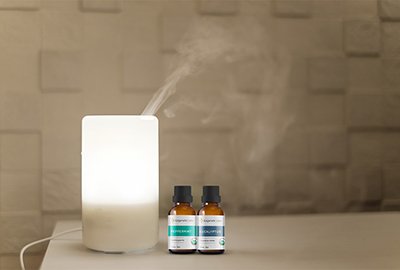 people diffuse eucalyptus oil for many reasons…
people diffuse eucalyptus oil for many reasons…
- Folks suffering from the common cold, flu, sinus problems, and allergies are potential candidates, as are people with respiratory problems ranging from bronchitis and chronic obstructive pulmonary disease (COPD) to pneumonia and even tuberculosis.
- Eucalyptus oil can also be diffused simply to cleanse the air and freshen up a room, helping to eliminate stale and foul odors. Many people combine eucalyptus oil with other oils such as citrus and peppermint for added aromatherapeutic support.
- Eucalyptus oil also functions as an excellent topical salve for cuts, scrapes, burns, sores, and other types of skin wounds.
- Because of its reported pain-relieving properties, many people also report using eucalyptus oil to help soothe bug bites, bee stings, muscle soreness, itching, and other skin-associated discomfort.
Important Notes of Caution When Using Eucalyptus Oil
When using eucalyptus oil topically, be sure not to get any into your eyes or other sensitive areas, and avoid applying it directly into open wounds.
It is also always advisable to dilute each drop of eucalyptus oil with a quality carrier oil such as coconut oil, olive oil, or jojoba oil and to test for skin sensitivity before applying to the skin in larger quantities.
As with all tools to support your health, you’ll want to use only the highest quality organic oils. While the risk of side effects is minimal, always seek medical advice from a qualified health practitioner to guide you for the appropriate usages for your individual health needs.
The powerhouse trio of herbs in Magi-Complexx Essential Oil provides the strongest, most synergistic healing effect, helping sufferers of arthritis pain, constant muscle aches and pains, neuropathy, systemic inflammation, slowed wound healing, circulatory challenges, as well as skin irritations like eczema, psoriasis, and acne.

Imagine yourself, for a moment, coursing through a windy pathway that carves out an ancient woodland grove in the south of Arabia along the Red Sea. As you walk, you take in the many sights, sounds, and scents of this pristine and sacred environment. It’s likely that your ears would be tickled by a gentle chorus of chirping birds; your eyes would be flooded with a sun-drenched tapestry of desert-native flora and fauna; and your nose would breathe in the distinct aroma of one of the world’s most fascinating plant species – the frankincense tree.
Known as Boswellia in the scientific literature, frankincense boasts a unique, rich history throughout the Middle East. Its legacy even spans into modern times and into every corner of the globe. Beyond its elegant, low-flowing branches and bright, perky flowers, the frankincense tree produces a powerful resinous sap.
Today as it has in the past, this precious substance sets frankincense apart from most other plants. Frankincense resin is valued for its uses in everything from religious incense and perfume to decorative jewelry, toothpaste, deodorant, and even folk medicine.
In part because of its rarity (frankincense grows naturally at the southern end of the Arabian Peninsula, and almost nowhere else), the sap of frankincense has been a prized treasure throughout much of the world for thousands of years. At one time valued more highly than gold, frankincense is viewed by many as one of nature’s special blessings.
So precious is frankincense, in fact, that the Magi from the well-known Biblical account who trekked across the arid desert to visit the newborn Christ brought some of it with them as a priceless gift fit for a king.
Where Does Frankincense Oil Come From?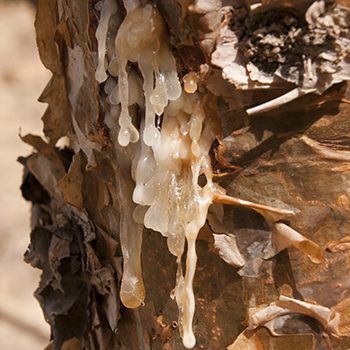
So why is frankincense so special, and where does it come from? Incisions (“wounds”) are cut into the Boswellia tree and the tear-shaped droplets of sap that escape are carefully scraped off and dried. These “tears” solidify into an alluring mass of silver, golden, and amber colors that, in and of itself, are a sight to behold.
The hardened frankincense gum is either burned or processed into essential oil or oil extract, depending on the intended use. These conversion methods release the various aromatic terpenes locked inside frankincense, which unleashes that intoxicating, fragrant bouquet that typifies this unique and incredible plant.
As part of their burial rituals, many ancient civilizations, including the Greeks, Romans, Egyptians, and Israelites, would use these various frankincense extracts to embalm their dead as part of a holy laying-to-rest ceremony.
The earthy, sweet-smelling aroma of frankincense is nothing short of pungent, after all, helping to deodorize and freshen nearly anything to which it’s applied. Frankincense can even function as a type of insect-repellant, according to both historical and modern accounts, helping to ward off mosquitos and other flying insects.
The pleasant scent of frankincense can be used to both calm and invigorate. As an essential oil, frankincense is commonly used to promote relaxation and peace of mind, with many likening its effects to mental and spiritual enlightenment.
Reported uses of frankincense in this vein include stress reduction, anxiety relief, and mood improvement – all benefits with timeless and universal relevance and appeal.
Frankincense: Where Cleanliness Meets Godliness
Like pleasant aromas, cleansing is another all-encompassing ritual that never goes out of style and frankincense holds a prominent spot in the personal care lineup as well.
Many soaps, shampoos, toothpastes, and deodorants with authentic base notes contain frankincense because its aroma is both soothing and long-lasting.
When applied to the body, frankincense is widely recognized as helping to moisturize and freshen the skin, while some people even chew its resin whole because they say it helps to keep their teeth and gums clean – a purification tradition with ancient roots.
In aromat herapeutics, civilizations since practically the beginning of time have used frankincense to purify the air by diffusing it with that characteristically fresh and piney scent exclusive to this particular resin.
herapeutics, civilizations since practically the beginning of time have used frankincense to purify the air by diffusing it with that characteristically fresh and piney scent exclusive to this particular resin.
In a peer-reviewed animal study published in the Journal of the Federation of American Societies for Experimental Biology, researchers from Hebrew University in Jerusalem stumbled upon perhaps another purifying facet to frankincense: its ability to “purify” the body when inhaled by lifting one’s emotions out of a toxic state.
In a separate published article “Frankincense Oil: The rainbow bridge,” researcher Peter Holmes explains how frankincense has long been regarded as “the scent of purification,” not only in physical sense, but also in an emotional and spiritual sense.
By allegedly helping to clear the mind and soul of damaging weights and burdens, frankincense may help to facilitate a spiritual cleansing or rebirth, aiding in the rejuvenation of the senses [1].
What About Frankincense and Health?
Even more well-documented in the scientific literature are the non-metaphysical effects of frankincense. Asian, African, and Ayurvedic systems of medicine have long held frankincense in high regard for its health-promoting benefits, with plenty of empirical evidence to back its recognized uses in supporting a healthy immune system and cellular function.
Here’s just a taste of what’s been reported in peer-reviewed scientific studies about the potential health benefits of frankincense:
- Researchers from Cardiff University in the U.K. decided to investigate the reported pain-relieving properties of frankincense. As reported in Science Daily, lead researcher Dr. Ahmed Ali stated that “The search for new drugs to alleviate the symptoms of conditions like inflammatory arthritis and osteoarthritis is a priority area for scientists. What our research has managed to achieve is to use innovative chemical extraction techniques to determine the active ingredient in frankincense. Having done this we are now able to further characterise the chemical entity and compare its success against other anti-inflammatory drugs used for treating the condition [2].”
- In a paper published in the journal BMC Complementary and Alternative Medicine, researchers concluded that an essential oil blend containing frankincense may help inhibit the spread and proliferation of viral cells associated with influenza. The study’s authors wrote that the oil “decreased direct infection of the cells,” adding that frankincense oil specifically “possess[es] anti-inflammatory activity through inhibition of immune cytokines production and leukocyte infiltration [3].”
- For patients with digestive troubles, the use of Boswellia has shown positive results in a number of
 studies, including in a human trial involving 20 patients who “suffered from chronic colitis characterized by vague lower abdominal pain, bleeding per rectum with diarrhea and palpable tender descending and sigmoid colon.” The patients in the study “were given a preparation of the gum resin of Boswellia serrata (900 mg daily divided in three doses for 6 weeks) and ten patients were given sulfasalazine (3 gm daily divided in three doses for 6 weeks) and served as controls [4].”According to the paper published in the journal Planta Medica in 2001, “Out of 20 patients treated with Boswellia gum resin 18 patients showed an improvement in one or more of the parameters … In conclusion, this study shows that a gum resin preparation from Boswellia serrata could be effective in the treatment of chronic colitis with minimal side effects [5].”
studies, including in a human trial involving 20 patients who “suffered from chronic colitis characterized by vague lower abdominal pain, bleeding per rectum with diarrhea and palpable tender descending and sigmoid colon.” The patients in the study “were given a preparation of the gum resin of Boswellia serrata (900 mg daily divided in three doses for 6 weeks) and ten patients were given sulfasalazine (3 gm daily divided in three doses for 6 weeks) and served as controls [4].”According to the paper published in the journal Planta Medica in 2001, “Out of 20 patients treated with Boswellia gum resin 18 patients showed an improvement in one or more of the parameters … In conclusion, this study shows that a gum resin preparation from Boswellia serrata could be effective in the treatment of chronic colitis with minimal side effects [5].”
- Numerous studies have likewise investigated the use of frankincense for improving a range of health outcomes in patients with the “Big C:” cancer. Just one example is a peer-reviewed paper published in the journal BMC Complementary and Alternative Medicine in 2009 which concluded that frankincense oil “appears to distinguish cancerous from normal bladder cells and suppress cancer cell viability. Microarray and bioinformatics analysis proposed multiple pathways that can be activated by frankincense oil to induce bladder cancer cell death. Frankincense oil might represent an alternative intravesical agent for bladder cancer treatment [6].” [Note: “Intravesical” is a type of therapy where a liquid drug is injected directly into the bladder via a catheter.]
While none of these benefits or outcomes are guaranteed from the use of frankincense oil, their cited presence in the scientific literature are worthy of consideration. There’s a reason why frankincense has been so pronounced throughout history as a natural substance worth its weight in gold – and then some.
Whether in times past, present, or future, one thing is for sure: the frankincense tree and its fragrant resin really is one of nature’s treasures with sacred significance, and shouldn’t be ignored.
Joint & Muscle Care is a revolutionary supplement that takes three of the strongest inflammation support agents in nature (frankincense, myrrh, and turmeric), and combines them in the same perfect union treasured by the ancients. Available in capsule form or as an essential oil blend called Magi-Complexx.



